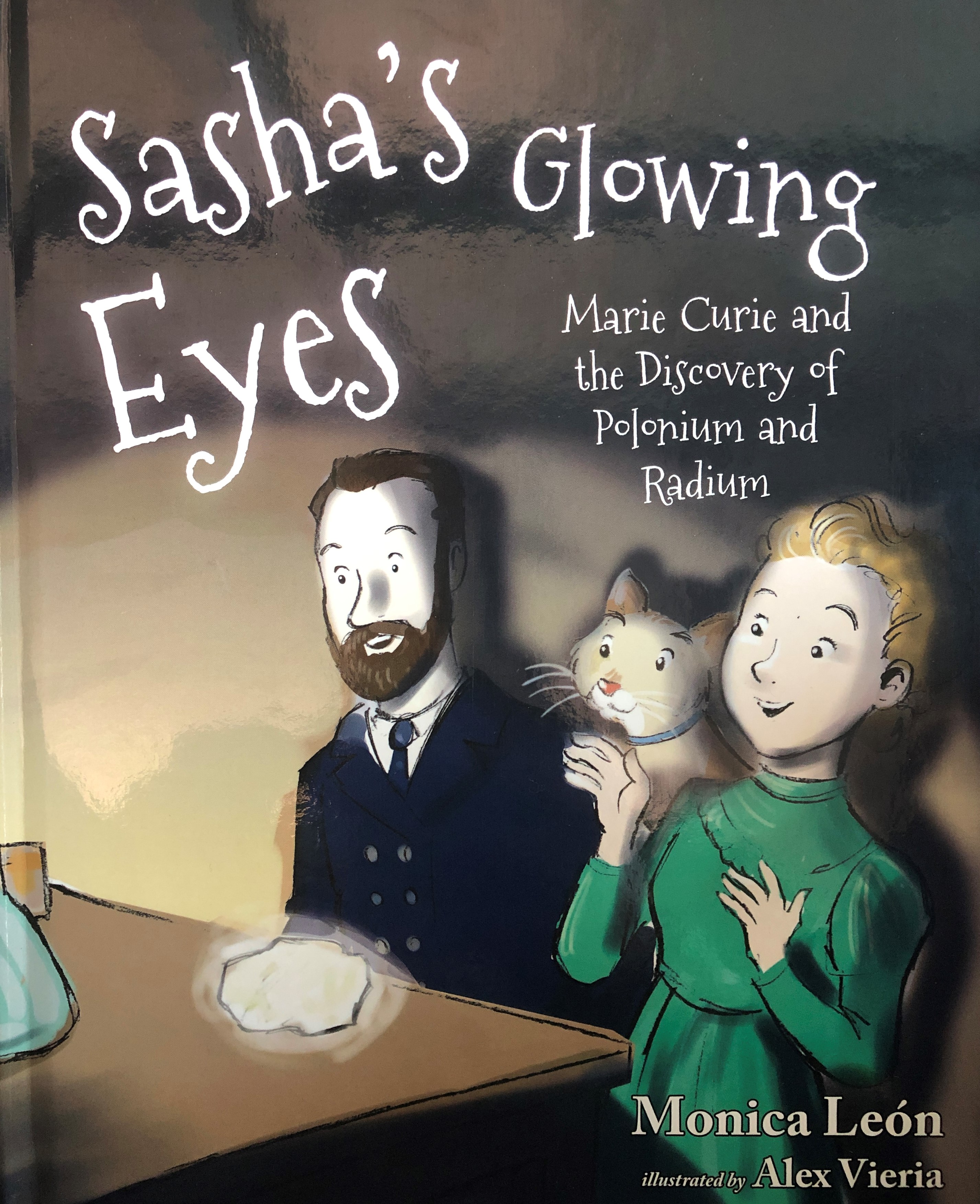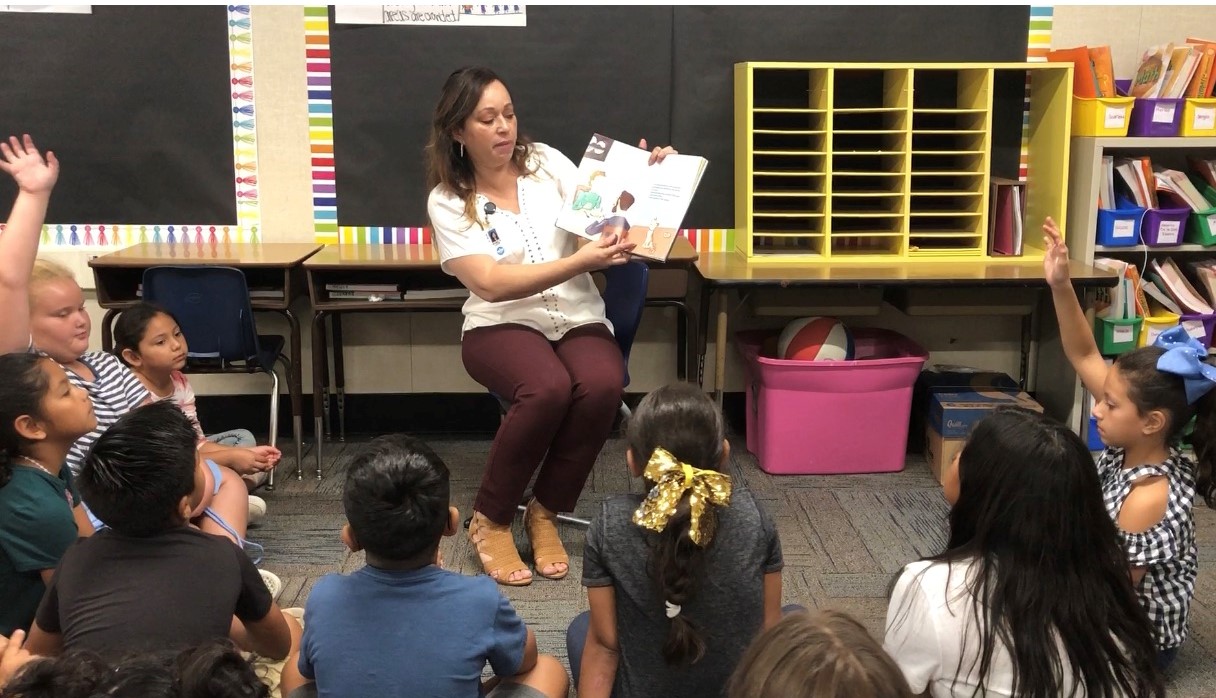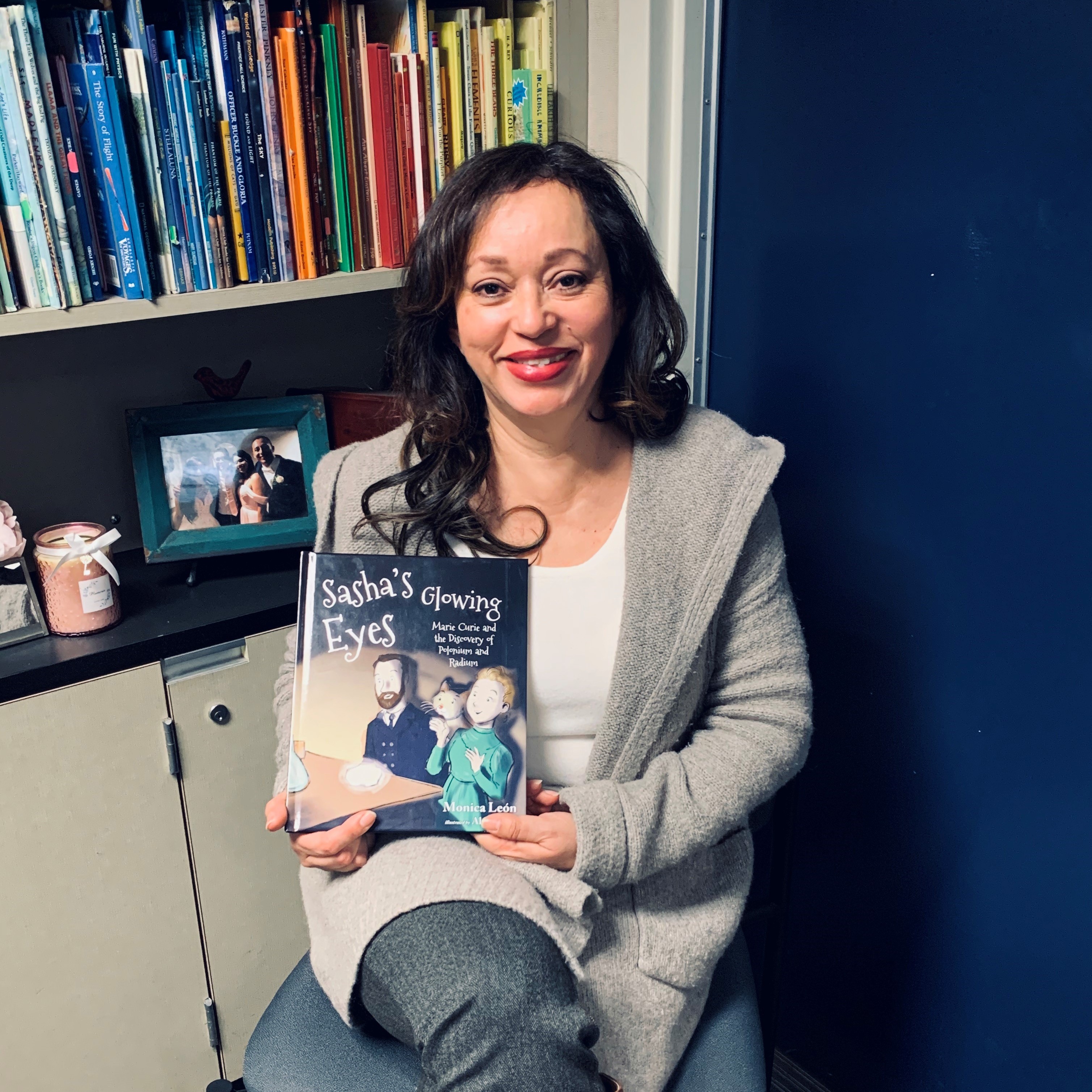 A cat, a trailblazing scientist, and a story of courage, dedication and perseverance.
A cat, a trailblazing scientist, and a story of courage, dedication and perseverance.
Those are the elements of “Sasha's Glowing Eyes: Narrative Input on Madame Curie" – a children's book by Monica Leon, principal of Pedley Elementary School.
In the book, a fictional cat helps tell the factual story of scientist Marie Curie, the first woman to win a Nobel Prize. Madame Curie, born in Poland and naturalized in France, also is the only woman to win multiple Nobel Prizes (1903 and 1911) and the only person to earn the prize in two fields of science (physics and chemistry).
Madame Curie showed, by example, how to innovate, break barriers, serve others, excel through persistence – and learn without limits.
Ms. Leon helps bring that story to life – in a way that connects with children – in “Sasha's Glowing Eyes."
“Experiment after experiment, Sasha still doesn't know what all of the fuss is about," the book jacket says. “Join Sasha as she watches Marie and Pierre Curie discover the unknown, and make history along the way."
In a review of the book on Amazon.com, one customer said, “Sasha's Glowing Eyes is a story of perseverance and triumph ..." Another wrote, “My son loves science and this was perfect for him."

Asked to share insight into her book, Ms. Leon answered a few questions:
Q. What prompted you to write the book?
A. When I was a teacher and working on getting certified as a Project GLAD trainer I had to write a unit on Elements. Part of the unit needed a narrative story and I couldn't find a story that was written about Marie Curie as a narrative so I decided to write one. In an effort to make it fun for kids to read, I added Sasha, the cat.
My intention at the time was not to publish the story; it was simply an exciting aspect of writing the unit. When I started presenting it in front of teachers, I often heard, “You should turn that story into a book." One day I did.
Please describe your story (without giving away too much).
The story is centered around Marie Curie's research and becoming the first woman to be a Nobel Prize winner for her discoveries, and she won two! It is a story about perseverance.
How did you develop the title?
When I had the skeleton of the story, the facts, I wanted to make this story a narrative for kids, so I knew I had to make it more interesting. As I continued to research, I found out that Marie Curie had a cat. My daughter had a cat named Sasha and so I decided to name the cat Sasha and created her to look alike as well. The title was something that connected with the end of the story and I found it to be something kids would gravitate toward, vs. just calling it “The Story of Marie Curie."
How long did it take you to write it? Where is the book available?
The story took me about four months to write. The book is available in each school library in our district. (Editor's note: It is also for sale on Etsy and at Amazon.com.)
What was the most rewarding aspect of completing and publishing your book?
The most rewarding aspect truly was Marie Curie's story of perseverance. I wanted students to know when discoveries or inventions are made they most often follow many failures, but perseverance is the driving force. Also, I wanted to highlight women in science. I want girls who read this book to feel empowered.
What advice would you give to aspiring authors who might want to follow in your footsteps?
Start with your creative idea, ask for some friends to help edit your work and explore your options for publishing your story.
What was most challenging about the writing, storytelling and/or publishing processes?
The most challenging part was doing the research and ensuring that the facts were as accurate as possible. I am not a science major, so I learned a lot in my research. It was difficult to create a balance of facts and fiction. The publishing process can be very detail-oriented because you have to consider what kind of illustration you want for each section and how much to edit so that your story is not too long.
How much of your story is fact, and how much is fiction?
Most of it is fact, except for Sasha. I really wanted to include in the book a picture of Marie Curie surrounded by male scientists but couldn't because of the extra work on the copyright. She is surrounded by male physicists and chemists from all over the world at a symposium.
In your view, what makes Madame Curie intriguing? What qualities did she model for children?
She was unique because she broke barriers. She loved what she did and worked to learn more about her passion. She also worked to help people with her discoveries. During World War I she drove vehicles with radiology units to help the wounded on the front lines. She was about learning, but also about applied science and helping people. This was during a time when most women stayed home and took care of their families. She was amazing!
What key message would you like readers to take away from the story?
I would like students to find passion in the career they choose because when things get difficult, it is important to persevere through those tough times, whether it is the earning of a degree or the job itself. When you enjoy what you do, you persevere because you … will ultimately make a difference.


